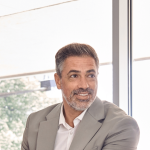
What would a school look like if all faculty and support staff regularly met to discuss student successes and challenges? It would look exactly like Mountainside Success Academy in El Dorado County Office of Education. Join Dr. Janet Pilcher as she interviews Principal Maria Osborne and Instructional Strategist Sharon Shipley about their approach and experiences in leading and teaching students in alternative education. Listen to hear how they regularly meet with students to provide personalized support and integrate trauma-informed practices to address the unique needs of their students.
Latest Episodes
Maria Osborne: Never underestimate anybody’s role on a school campus. Anybody’s role.
Intro
[Intro music plays in the background.]
Janet Pilcher: Hello everyone, welcome to today’s Accelerate Your Performance podcast, where we gather each week to share strategies for hard-warring excellence in education.
I’m your host Janet Pilcher. And before we dive into the episode, I want to make sure you don’t miss out on our annual conference What’s Right in Education. It’s specifically for leaders in K-12 education, and it’s happening just one month from now. Seats are quickly filling up, and we look forward to having our partners and those who are connecting with us each and every day, people like you to visit us at our conference and to join us to network with your colleagues. So just connect to Studereducation.com/wrie to view the agenda and register. It’s one of my favorite events of the year, and I’d love to see you there in person.
Last week, we heard from two operational leaders from the El Dorado County Office of Education. If you missed it, you can check out the link in the show resources. Today, we’re going to follow up with two more leaders from that district.
First, you’ll meet Maria Osborne, principal of Mountainside Success Academy. We’ll also talk to Sharon Shipley, an instructional strategist at the same school. You’re really going to enjoy this conversation because they’re doing phenomenal student-centered work at their alternative school, and they’ll share some of the strategies they’ve used to help 100% of their seniors graduate or transition to their adult programming.
Principal Maria Osborne has been in education for 26 years, and she feels very fortunate to have a career where she can do whatever it takes to help students experience personal success. She’s been mentoring, emerging administrators for over a decade, and in 2022, she earned the ACSA Region II Alternative Education Administrator Award.
We’ll also speak to Sharon Shipley, an instructional strategist who has been in education for 13 years. When asked about working in alternative education, she says that supporting at-promise students is the most rewarding aspect of her career. Let’s dive in and hear from Maria and Sharon today.
Interview
Janet Pilcher: Okay, let’s get started. So I’m looking forward to hearing about the good work that you all are doing at Mountainside Success Academy and just love the questions that are here and just really can’t wait to experience and for our listeners to experience the good work that you’re doing.
So Maria, I’ll start with you, and your school services some of the most vulnerable high school students. And by the way, I was a high school teacher years and years ago, so a great connection to my heart here. And you know, taught some pretty high-need students and they never go away. I mean, they’re always, they’re always driving you, and you all have been successful in that traditional setting.
So just curious, did you start your career knowing that alternative school is where you wanted to land or did you find passion along the way and how did you get to where you are?
Maria Osborne: Well, it started, you know, as a teacher, you have this personal autonomy in the classroom to explore methods and how to gauge students and igniting curiosity about certain things. And that autonomy in the classroom in a standardized setting was so a traditional setting worked very well for me. I found out what mattered to students, what motivated them.
But oftentimes I found out that the relational development between student and teacher, I could discover their barriers, whether it was economic, social, personal, and a lot of times rooted in trauma. And then I got into leadership in a traditional setting. And I spent a lot of years in a traditional setting, but I began to see potential for a very different approach. Innovation can happen within traditional settings, but I believe alternative programs offer a unique opportunity to pivot quickly, address challenges, strategize solutions, and evaluate effectiveness. And I think the agility that an alternative program offers is what appealed to me.
But the most essential element in all of this is the team, because none of these achievements are possible without having the right people in the right places, each committed to the shared vision. We developed our own mission statement, which contains the words “personal success,” which I will highlight numerous times. And at the end of the day, it’s the people who makes the difference. I’m fortunate to lead a team that consistently puts students and families first. And together, we have a lot to celebrate, and we’re looking forward to this year.
Janet Pilcher: Yeah, so good. And it is truly the combination of people, I mean, the people, the connection of people, having that right group of people that makes up the team, with the right mindset, the right heart, the ability to build the agility like you’re talking about. And I think that’s right. The fun of leadership and being able to lead in an agile environment, it takes a special type of leader to want to do that. But I think that’s, I feel like what you’re talking about is you’ve gravitated to that. And that’s something that you really enjoy doing and challenges you, I’m sure.
You’ve had great success. And by June of this past year, 100% of your seniors graduated or transitioned to an adult program. So talk a little bit about how you achieve this and the type of feedback process that you engage in with your students.
Maria Osborne: About four years ago, our data showed that parents and students or families and students didn’t really know where they stood academically or where they stood on their goals. And we developed a template called a student success plan, which has evolved every single year. We make additions and changes based on what we see and what the information we want to have.
And I think, you know, in order to solve a problem, I mean, Pat definitely talks about identifying what is the problem you’re trying to solve before you solution seek, right? And so these student success plans help us to define and tailor what success looks like to each student.
So, I’ll explain a little bit of what that looks like. The student success plan, each student has a success coordinator and the success coordinator is a teacher. Some people might call it a homeroom teacher, but this success coordinator remains with this student and meets with them quarterly on a formal process, but daily when they’re here on campus. So there’s daily check-ins and then there’s a formal check-in.
The formal check-ins involve long and short-term goals, evaluating current progress and also identify barriers that prevent them or stopping them from moving forward. And I go back to the personal success. What does personal success look like for some students?
It’s getting to school. That’s personal success, right? And I think it’s part of the journey and honoring those small wins and passing those milestones. But I think the most critical aspect of that development is the meaningful relationships that are developed between students and their support teams. And by teams, I mean, teams, it’s plural. So they have their teacher team, they have their support staff team, they have administrative team. And during these meetings, students are specifically asked to reflect on what’s been going well, where they’re encountering challenges. This helps us gain insights from these discussions and they’re invaluable.
But that data helps guide our work because while the data we collect is essential in guiding our work, it’s the trust and collaborative relationships we build with our students that are ultimately driving the success. And when I look at this statistical numbers of, you know, 100%, I can say that we know where all those kids are. We know pretty much what they’re doing. But part of that is we’re small. We can do this. But you can develop this inside a larger school if you have small teams within a school, right?
So I do see it that it could be replicated. But for us, it’s working. And again, but the I have to say, Janet, that form changes every year because our questions change. Yeah, evolve, they evolve. But overall, it does guide our work. It does work.
Janet Pilcher: And Maria, when you’re engaging in conversations with the students, you have the form and the template with the plan, they’re looking at their data, right? I mean, they’re talking in teams, are they looking at like, whether it’s like I’m showing up on time or I’m absent or my achievement from week to week or day to day, I mean, are they looking at that type of data and having those discussions about their data?
Maria Osborne: Yes, because that form asks them very specifically what’s been challenging. It also asks for generalities. But then between the student and the success coordinator, they identify what resources are possibly needed. Sometimes, I would say a number of times, some of those resources are out of reach for a school. But that doesn’t mean that we can’t try to communicate with community resources to try to help. So whatever the issue is, we’ll try to meet that or effect change in a positive way on that.
But we also talk, we’ve added a section about post-secondary planning. What do they want to do? We are a dual enrollment school. So we do offer dual enrollment. So of course, encouraging students. And then this year, we started with mountainside advanced planning, which is our post-secondary approach to what are you doing when you get your diploma and you walk across that stage, where are you walking? Where are you going? So it’s led to this aspect of it. So I might be able to address a little bit of that later.
Janet Pilcher: Yeah, no, that’s really good. So they’re looking at what kind of real time of where they are now, but also how that’s really helping them move to that next step and then eventually to where they’re going to land.
So Sharon, I’ll connect with you to keep students and caregivers aware of academic progress, which is what we’ve been talking about. Homeroom teachers are committed to rounding with their students at a minimum of three times a year. What does that look like in a classroom and what have you learned from it?
Sharon Shipley: Yeah, I think it varies. I think every homeroom teacher is different. And that’s what’s kind of special about our program is that we have the ability to really match you with someone that you hopefully will get along with and create not just like a year long, especially if we have you from ninth grade, not just a year long relationship with, but like a four year relationship where I’m connecting with that family over and over and over, even if I don’t have them in my class.
So that parent knows me. It’s not an out of the blue call for me to be like, your students doing really well or, you know, we may need to fix these areas because we have that relationship. And I think that that is a critical piece because that’s not really a formal, that really has nothing to do with this form as much as it does this overarching idea that like, we are whole child centered, but also like whole family and whole community and getting everyone involved because students don’t succeed with just one person.
We need them to succeed with everyone they can. And I think the homeroom teacher is that connecting piece between, between these resources outside. A lot of it is informal. It’s just daily like, hey, I’ve noticed you’re late every day. What’s happening? Like, do you need help getting to school or you seem really tired? What’s going on, right?
So informal, the formal check in with the form three times a year is very helpful because students do look at their data. It’s like,” let’s look at what you passed. Wow, look at all these classes that are gone. Like, you’re well on your way. You’re now 15 credits closer to graduating. Look at this number. It was huge. Now it’s getting smaller and smaller because students don’t always see that, right?”
Even in your class, they’re like, “I just want to get through,” but they don’t know where they’re going or what the goal is. So looking at transcripts and looking at your progress and what’s going on. And then a form does go home to the parents or guardians, which helps them know.
I think sometimes the assumption is students who are struggling, maybe their outside members of their community don’t care, but oftentimes they do and they do wanna know. So just that three times a year, they’re gonna get communication about where their student is at and they’re not surprised come senior year. Like you’re still a little bit behind. Like we’ve known this the whole time, right? Like we can fix this. It becomes not an impossible challenge, just a challenge.
Janet Pilcher: So, yeah. I love what you all are saying too is, because that’s one thing that as we’ve looked at the data with at risk students and that educational process, it does go beyond the classroom, right? It goes to the parents or the caregivers or the person who’s most connected to them. But I love what you’re saying too, it’s community. Like if we can get resources or we can figure out where gaps are and we can reach out the community to build that holistic approach, you all are gathering that information by asking those questions and really getting a deeper understanding.
I mean, I think that’s really significant in what you’re talking about right now because sometimes we just really do think about that classroom as just that small little area that a lot happens and it’s magical in there, but it can’t function alone sometimes and help kids be successful without some of the work that you all are doing that’s pulling in resources.
Sharon Shipley: I also think one of our keys here is we do something called student talk where teachers do, we all meet, everybody classified, anyone who’s on campus, we meet and we do talk about, hey, what are those challenges you’re pulling out from the success forms? What are the things that are going right? And how can we support this student? What can we do?
It’s just this whole community of our everyone so that now I know not only is a student struggling in my class, oh, they’re struggling all over. Let’s all rally behind them and help them be successful.
Janet Pilcher: Yeah, and like that team approach that Maria you were talking about, really as a team focusing on student success. And so I wanna share, as we continue the conversation, student safety, student wellbeing is such a big topic and one that’s kind of that hot topic that has a lot of things going on and moving around, but when it gets down to it, it’s really looking at what does that mean for each of the students? And so you have your students paired with a success coordinator and they’re building strong relationships as you all have talked about to foster that sense of safety.
So how do you measure that feeling of safety among students and what actions are you taking to continue to move that along to build those relationships that build that sense of safety?
Sharon Shipley: Right, I think we have obviously formal and informal ways of measuring it. The most formal way is we have surveys that come back California Healthy Kids or the Studer surveys that say, I think one of them came back last year that we had 90% or more of our students who said they felt safe on our campus. People say from those surveys, the students say they feel like they have at least one adult who is supporting them and really wants them to succeed. Very high numbers for those.
So the fact that students who typically don’t really even wanna take a survey are willing to take the survey and respond that way is great data for us to know how safe our campus is or how safe the kids are feeling. I think another way is informal. Our students typically have come from a past where a lot of them do not want to go to school. And we have students who come on their days, they don’t have to be here, they stay late, they want to be on campus. And I think that’s just an informal way of knowing this must be safe enough that you wanna come when you don’t even have to be here.
Janet Pilcher: So yeah. Absolutely. And they feel good, right? I mean, it’s a place where they actually can feel good about themselves or they feel like people care about them or they know people care about them. That is the truest sense of safety that you all have created.
So let’s, Maria, I’ll turn back to you and just looking at the future a little bit. And your next goal is to have a hundred percent of your students transition effectively to employment or career program, as well as to build their sense of hope and optimism for their bright future. How will you get there and what tools will you use as you look toward the future with your students?
Maria Osborne: Well, that question was intimidating. It was giving me chills when you were reading it to me because it is our best hope for all these kids, right? And I think that what we have to continue to do is, I like what Sharon said about the whole child, whole family, whole community approach, is that we have to continue to set achievable goals and to let them see, to help encourage students to see that they are achievable goals.
And I’ll go back to the personal success part. We say that our students will experience personal success and so much in this world tries to identify what success looks like and tries to define what success looks like. But for one of those struggling kids that Sharon talks about, personal success is making decision to get up and come to school, making a decision to meet with your teacher, making a decision to be vulnerable and say, “I need help”. To me, those are immeasurable because the other stuff doesn’t happen authentically and thus that first part happens.
And so I think we have to continue to set those achievable goals, but I mean to be persistent. The joke around campus sometimes is, I taught English for 10 years and grammar is very important to me. And one of my staff members said that, “we never end anything with a period.” There’s always a next. There’s always a next. There’s an ellipsis. There’s a semicolon. There’s a continuing of the journey. There’s a continuing of the story. There is no end. And I think that the other word that we also use frequently around here is “eventually.”
Eventually.
I’ve had students call me two years later and say, “how do I get into adult ed? I really need to pass this program.” So they know they can call here. This happens more than since this is my fifth year, this happened, this is my sixth year. This happens more often than not. And Sharon’s been here as long as I can. She can attest to that as well.
I think is setting those achievable goals, celebrating short-term wins, continuing to identify long-term vision for the students and letting them know it’s okay to change. It’s okay. Continue to promote health and wellness and a growth mindset and to continue to remain curious. And I know those are all education words, but again, it’s, do they feel safe coming here? Do they feel safe sharing their vulnerabilities? Sharing that we’ve done a lot of work around trauma.
I think that we pretty much have settled on, trauma can do so much to impact their thinking later on in life. And it’s helping them not only deal with that, but to see that they are an individual outside that trauma. I think those were a lot of words to say.
Janet Pilcher: That’s so good. Well, and one thing that you said earlier, Maria, that has stuck with me through our episode today is, you all are working with some of the highest need students and really highly focused attention. And I love one thing, I love what you said that they can come back to you. ‘Cause I’ve often wondered like, when students graduate, why is there an ending to the connection to the school? Like that’s never made that much sense to me in our field. Like, why do we just like let them go and not think about alumni, so to speak. I don’t know, just what’s the reconnect back in a way that’s meaningful to them?
The fact that you all have set the stage for that to occur where students can continue to come back to you for help speaks volumes to the work that you’ve done with them. The other thing that you said earlier, which I think is so important, what we’re talking about today, I think is one of the most important aspects of education that we’re dealing with. And why can’t this work in all schools? Why can’t we build these types of relationships with our young people in all schools?
And yeah, it’s bigger, it’s more complicated, it’s more complex, but it doesn’t mean it’s impossible or that we shouldn’t do it. And I think what you all are really doing right now is just providing that example and model of what success looks like when we really build those engaged relationships, not relationships for the sake of just building a relationship, but really helping students move from one point to another and to they get to a point to where they define success for themselves. So I just, I really appreciate the work that you’re doing.
So I’ll just close, I’ll give Sharon, I’ll go to you, just a closing thought as you’ve listened to our episode today as there’s something that’s in mind that you’d like to leave our audience with and then Maria will come back to you.
Sharon Shipley: As I just, I agree, I think all students need support. So it is, we work in this environment where yeah, we work with at-risk youth particularly and students who have a lot, but every student has a lot and everyone carries something.
And so I think you’re right. Like the idea of “Dream Big,” because I think if you would have looked at our school six years ago, you would have probably thought something very different than you think now. So, the opportunities are endless. I think it just takes everybody being on board and really putting kids first and their needs first. Like Maria said, we define success as a lot of things but helping a student actually be successful might look different these days than it used to. So maybe kind of re-envisioning that for education would be my hope for sure. Thank you, Sharon.
Janet Pilcher: Maria, what are your thoughts?
Maria Osborne: I’m continuing to go back to the power of the team. You can have all kinds of effective structures and all kinds of effective ways of doing something or building something, but unless you have the power of the people behind the purpose to support the vision and never underestimate anybody’s role on a school campus, anybody’s role.
And if a school, I mean, I would be great to just try this. If a school could just get the entire staff together to sit in a circle and just talk about kids, talk about kids, the relationship, development between the teacher and the student, but also among and between the staff. Sharon knows that she can call on any staff member to help with something that’s going on because they know what’s going on with that kid. So that’s invaluable. And I just think never underestimate the power of your people to make a difference in the lives of kids.
Janet Pilcher: Absolutely. So well said and such a great closing statement. Our whole thing is never underestimate the difference in what you can do each and every day, every one of us and building that team of people who are highly committed but also have the tools and processes and resources they need in a systematic way.
I mean, it’s endless. I mean, we can continue to do great things and really build a profession of excellence in a way that we know we can. You too, our models and examples is that. Thank you so much for being with us today.
Maria Osborne: Thanks, Janet.
Sharon Shipley: Thank you.
Conclusion
[Outro music plays in the background.]
Janet Pilcher: It’s like Amy said, leadership is not a title. It’s a behavior. And from what she and Megan shared, it’s obvious they’re hardwiring leadership behaviors in all of their support staff. That’s worthwhile work that’ll create positive outcomes for all students.
As always, I thank you for tuning into this episode of Accelerate Your Performance. I look forward to connecting with you next time as we continue to focus on the Nine Principles Framework so that we can be our best at work. Have a great week, everyone.








